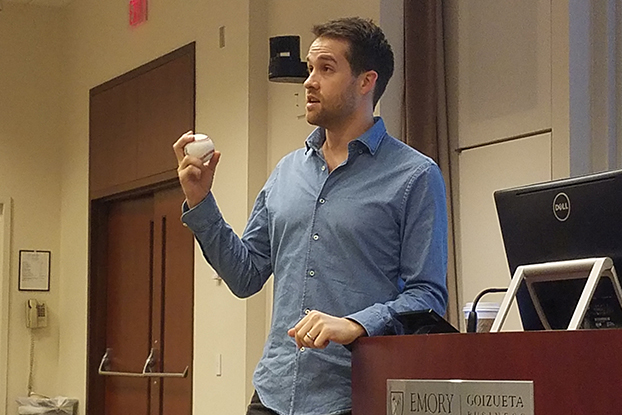
The Roman Arch was one of the most important architectural innovations of the ancient world.
Renowned for strength and style, the structure remains practical today thanks to the “Keystone” — a centerpiece that strengthens the arch by allowing the two sides to work together.
In similar fashion, the Full-Time MBA Program at Emory’s Goizueta Business School developed “Keystone Week” — an innovative program designed to marry the learning in a student’s first year and internship with long-term goals and application formed in the second, and last, year of study.
During Keystone (Twitter), students socialize, participate in community service and complete structured exercises designed to encourage strategic thinking about their final year in the program and the careers that follow. The week-long program, in its first year, began Sunday evening and concludes Friday with an alumni speaker challenging the class of 2012 to begin thinking about their legacy. One objective of Keystone is to formally merge returning second-year students with their classmates from the one-year MBA program preparing to enter the Fall semester.

Brian Mitchell, Associate Dean of the Full-Time MBA Program, said Keystone acts as the critical link between the first and second year of study and brings together the full Class of 2012 (two-year and one-year students). He also encourages community service and coordinated with Volunteer Emory to offer 11 sites around Atlanta for MBA students to do volunteer work Monday morning.
Keystone objectives also include personal growth goal setting by students. The newly introduced “Keystone Lecture” was delivered by renowned faculty member Ray Hill and focused on the current economic landscape and career advice for the soon-to-be MBA grads. Professor Hill was recently recognized by Businessweek as one of the “Most Popular Professors at Top Business Schools.”
“I don’t want Goizueta students thinking of their MBA experience as a linear journey,” Mitchell said. “When the first part is complete, you shouldn’t put it behind you and simply move on to the next thing. The pieces should work together, giving the entire experience more power and more meaning. That’s why the Keystone is so important.”
The Dean said Keystone creates the opportunity for students to “take the time to be strategic” about their next moves.
In a larger sense, it’s about legacy.
MBA students close Keystone week by hand-writing personal, five-year goals and sealing them in an envelope. Envelopes will be saved and displayed in the Goizueta building — not to be opened until the students return for their five-year class reunion.
“How are you going to apply what you’ve just experienced?” Mitchell says, referring to the knowledge gained by many MBAs in a fast-paced first year. “We’re taking the time to work through how they’ve been impacted, what they’ve learned and how they will implement those lessons at Goizueta and in their post-MBA careers.
“It’s sharpening the saw at a very important point in their journey.”
RELATED CONTENT
- TWITTER: Students talk about the week (#gbsks)
- PROGRAM INFORMATION: Two-Year MBA | One-Year MBA










